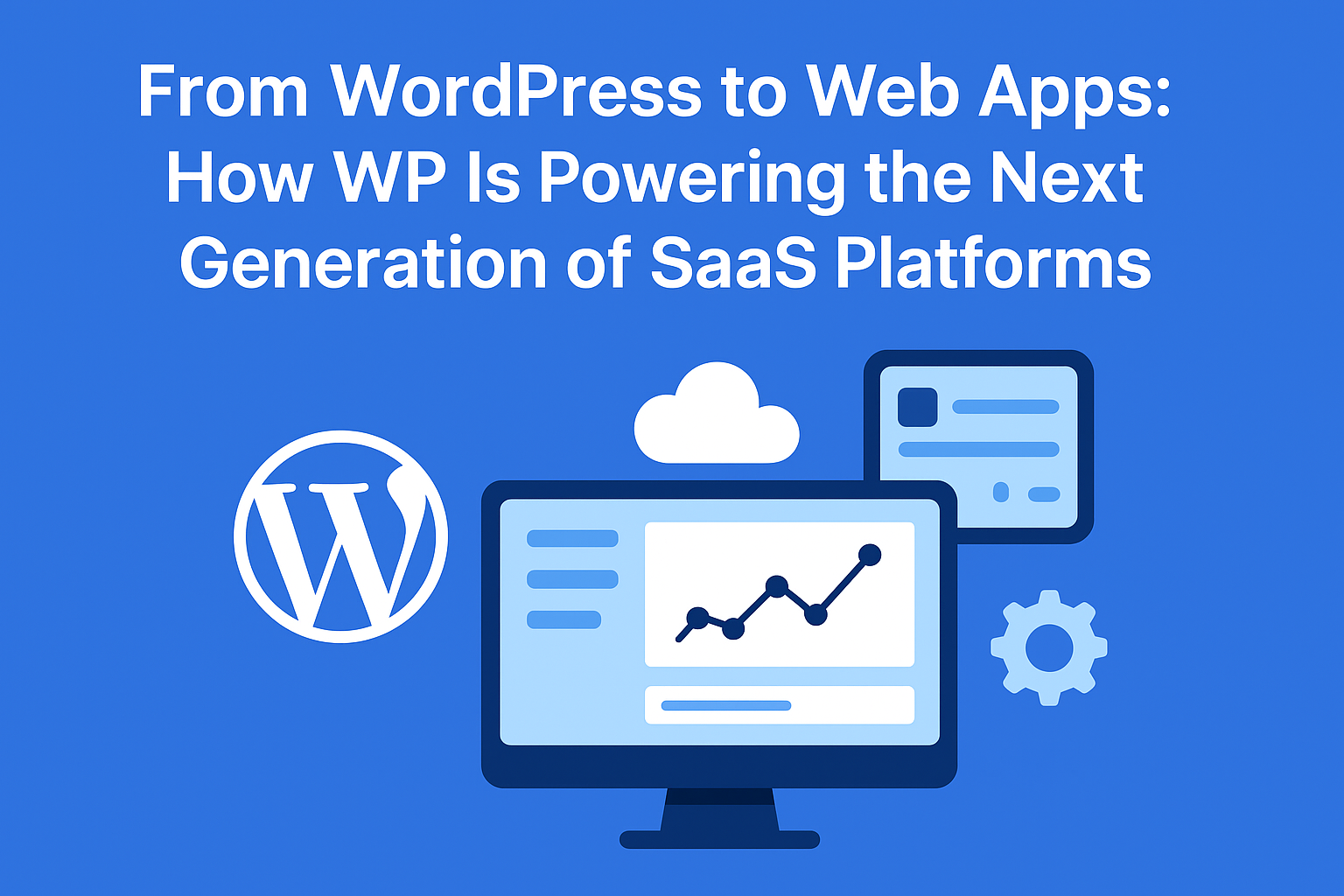From WordPress to Web Apps: How WP Is Powering the Next Generation of SaaS Platforms
Introduction
WordPress is no longer just a blogging platform. In 2025, it’s evolving into a full-fledged application framework — the backbone behind many SaaS platforms, dashboards, and digital tools. With REST API, modern JavaScript frameworks, and headless capabilities, WordPress is becoming a powerful foundation for web apps that rival custom-built systems.
In this article, we’ll explore how WordPress is shaping the future of SaaS and why developers are increasingly choosing it as their app engine.
1. WordPress Has Become a True Application Framework
WordPress has quietly evolved from a CMS into a flexible web framework. Features like:
- Custom Post Types (CPTs)
- REST API endpoints
- WP-CLI commands
- User management and authentication
…allow developers to treat WordPress as a backend for dynamic applications, not just websites. Many SaaS startups are already using WordPress to handle their data logic, authentication, and billing layers.
2. REST API: The Bridge Between WordPress and Modern Frontends
The WordPress REST API allows developers to use React, Vue, or even Flutter as a front-end layer. This turns WordPress into a headless backend, managing users, permissions, and data — while the UI is handled by a modern web framework.
Example use cases:
- React dashboards pulling data from WordPress.
- Native mobile apps communicating with WordPress endpoints.
- Progressive Web Apps (PWAs) powered by WPGraphQL or the REST API.
This separation of concerns makes scaling and performance much easier for SaaS products.
3. WooCommerce and Membership Plugins as SaaS Engines
WordPress e-commerce and membership tools are now SaaS-ready out of the box:
- WooCommerce Subscriptions supports recurring billing.
- MemberPress manages roles, access, and renewals.
- Gravity Forms and WPForms integrate payment gateways like Stripe or PayPal.
- WP Ultimo even turns multisite networks into multi-tenant SaaS solutions.
This ecosystem lets you launch a subscription-based product with minimal custom development.
4. Multi-Tenancy with WordPress Multisite
The WordPress Multisite feature enables hosting multiple apps or client instances under one installation — perfect for agencies or SaaS builders.
For example:
- A marketing SaaS can offer each client their own dashboard.
- A real estate SaaS can generate branded subdomains automatically.
- Updates and security patches are applied globally, reducing maintenance time.
With plugins like WP Ultimo, multi-tenancy is easier than ever.
5. Integrating APIs and External Services
Modern SaaS products rely heavily on APIs. WordPress integrates seamlessly with:
- Stripe API for payments
- SendGrid or Mailgun for emails
- OpenAI API for AI-powered features
- Zapier and Make for automations
This makes WordPress an API-first platform, capable of connecting to almost any service on the web.
6. Security, Performance, and Scalability
Thanks to managed WordPress hosting and containerized infrastructure, performance is no longer a barrier.
Platforms like:
…offer scalable environments with CDN, caching, and container orchestration. Combined with a headless setup, WordPress can handle thousands of users and real-time operations efficiently.
Conclusion
WordPress is evolving into something much greater than a CMS.
By combining REST API, modern JavaScript, and SaaS plugins, it’s becoming a framework for building SaaS platforms and web apps — quickly, securely, and cost-effectively.
The next wave of SaaS startups might not be built on Node.js or Laravel…
They’ll be built on WordPress.
🔍 SEO Metadata (Yoast)
- Slug: wordpress-to-saas-platforms
- Meta Title: From WordPress to Web Apps: How WP Is Powering the Next Generation of SaaS Platforms
- Meta Description: Discover how WordPress is evolving beyond CMS to power modern SaaS platforms. Learn how REST API, multisite, and WooCommerce enable full web apps.
- Focus Keyphrase: WordPress SaaS platforms
- Tags: WordPress, SaaS, web apps, REST API, headless WordPress, WP Ultimo, WordPress Multisite, WooCommerce, API integration, WordPress development, WordPress 2025, PHP, open source SaaS




